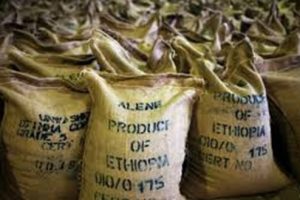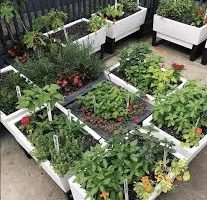BY ABEBE WOLDEGIORGIS
When it is combined with labor and capital land becomes a source of wealth creation but unless it is well managed, the benefit obtained from it will be insignificant and even might pose social disturbance.
In the country where agriculture is the mainstay of the economy, ensuring tenure security to farmers inspires to enhance productivity therefore, rendering more attention is essential.
Since the time of Emperor Hailesilasie, the land issue has been a hot political discourse. During the imperial era, the land holding system was the reflection of feudalism in which peasants were marginalized.
Historically, there were various types of land holding systems. In the northern part of the country, the ‘Rist’ system was characterized by communal land holding, provided inheritance rights to the members of the community and transferring land holding right from parents to the offspring’s was a common practice.
Here, farmers have relative freedom to use the land as they wish and benefit from the transaction value of the land. Unlike the northern part, the land system in the southern part of the country, peasants were land less and subdued to the land lords.
They paid tribute to the land lords and the church received small portion of their products. They had also a duty to provide corves labor to the land owners.
As the economy was predominantly feudal lasted for centuries, its productivity was hampered due to the absence of sense of land ownership in the part of the farmers. The production relation was an inhibiting factor for achieving economic progress.
Land lords reside in the city exploited peasants and enhanced their unearned income while the peasants became poorer and poorer.
According to the renowned land researcher Desalegn Rahmato, from 1950s own wards private investment was intruding in various parts of the country such as in Humera in upper, middle and lower Awash, in Wolayta and of course in Jigjiga and stimulated the economy. Some urban residents purchased land for farming and produced various crops and supplied to the market. Foreign investors also invested on cotton and sugar plantations in the Awash valley but though modern farming flourished, the expansion of mechanized farms posed the eviction of peasants.
In the 1960s the expansion of education gave way for the emerging elite class who demanded political and economic reform. The question of “land to the tiller” became the rallying point to the progressively minded class including the members of student movements.
The old imperial regime instead of preparing itself for the unavoidable change by responding the political and economic demand, it adamantly persisted to perpetuate the century old establishment.
The by cameral parliament comprised the lower and the upper house had a legislation power but failed to make law that enables to redress the appalling situation of peasants. In fact any law was not passed unless it was endorsed by the emperor.
The century old monarchial system which had been run out of time to cop up with the new situation was overthrown by the military junta and met its ultimate death in 1974.
To respond the question of “land to the tiller” which was the cause for the popular movement, the Dergue regime instead nationalized the land. The land proclamation of 1975 gave the monopoly ownership of the land to the government. Peasant’s tenancy changed from the land lords to the government and peasants only retained the use rights of the land and the transaction value of the land was once again nullified.
Most private farming enterprises also became nationalized and closed. The agriculture productivity witnessed its climax by private companies plummeted to zero.
Side by side the land holding system, the natural factors affected the land fertility and the ecosystem .The population growth which is the highest in the world became a threat to the natural resources. When their children became old enough to till land, farmers provided portion of their holding to them and this again made land fragmented and vulnerable to degradation.
The monopoly of land ownership by the government hampered the flourishing of private investment in the rural part of the country.
As the farmers had only right to use from the land, they had no sense of ownership and invest on it. They also showed reluctance to protect and conserve the natural resources.
When EPRDF took power, it sustained the Dergue land holding system and again the land lost its transaction value. In 1991 Ethiopian population was about 40 million and currently the number rose to about 110 million and still 80 percent of the population earns its living from subsistence farming which is environmentally unsustainable.
According to the Environment, Forest and Climate Change Commission (EFCCC) recent report, about 95 percent of the nation’s cultivated area is used by smallholder farmers with holdings of less than 2 hectares. Severe population pressure in the highlands is forcing land fragmentation and expansion of agriculture into forests, steep hill and mountain sides and marginal areas. There is little room for further expansion. In many areas, an increasing proportion of the rural population, as much as 30 percent has become landless. Furthermore, rapid horizontal expansion of human settlements into fertile agricultural lands without proper planning and zoning is reducing cultivable land.
The resource degradation made agriculture unsustainable practice and necessitate reforming land policy. We can understand from the above statement that utilizing land as business as usual enables the nation to ensure neither food security nor using the resource sustainably.
Similar to the Dergue regime, EPRDF used the land holding system to perpetuate its political power. It is proved that in the last five national elections, farmers were warned that unless they vote to the ruling party they would face eviction.
On the other hand unlike the Dergue, the EPRDF regime imposed land lease policy which is a capitalist model in urban centers that opened the door for corrupted officials to amass un earned income.
Evicting urban residents suspected of supporting opposition parties was also witness after the announcement of 2013 election result. Currently, the poor has no access to land for residential house construction. as the result, illegal settlement and land grabbing has been rampant particularly in the city.
According to economists, while 85 percent labor of the nation engaged in subsistence farming, attaining structural change is impossible. Hence, shifting the stranded rural labor to none farming sector such as the manufacturing and service through ensuring sense of ownership of land to farmers is essential. When it happens, more private investment flows to all sectors and farmers bargaining power to transact their land also will be enhanced.
Currently, Ethiopia is preparing for the 6th national election and the ruling party promised to conduct free and fair election and various helpful measures have been taken to make it so.
Reforming laws and appointing personnel with professional integrity to lead democratic institutions including the election board brought a glimpse of hope.
When the parties’ political debate begins the land issue is expected be a priority agenda and after announcement the election result, priority agenda of the incoming government should be restoring farmers’ tenure security through ensuring not only the use value but also transferring the land.
Editor’s Note: The views entertained in this article do not necessarily reflect the stance of The Ethiopian Herald
The Ethiopian Herald April 15/2021


